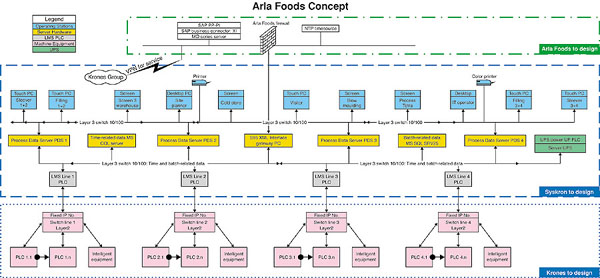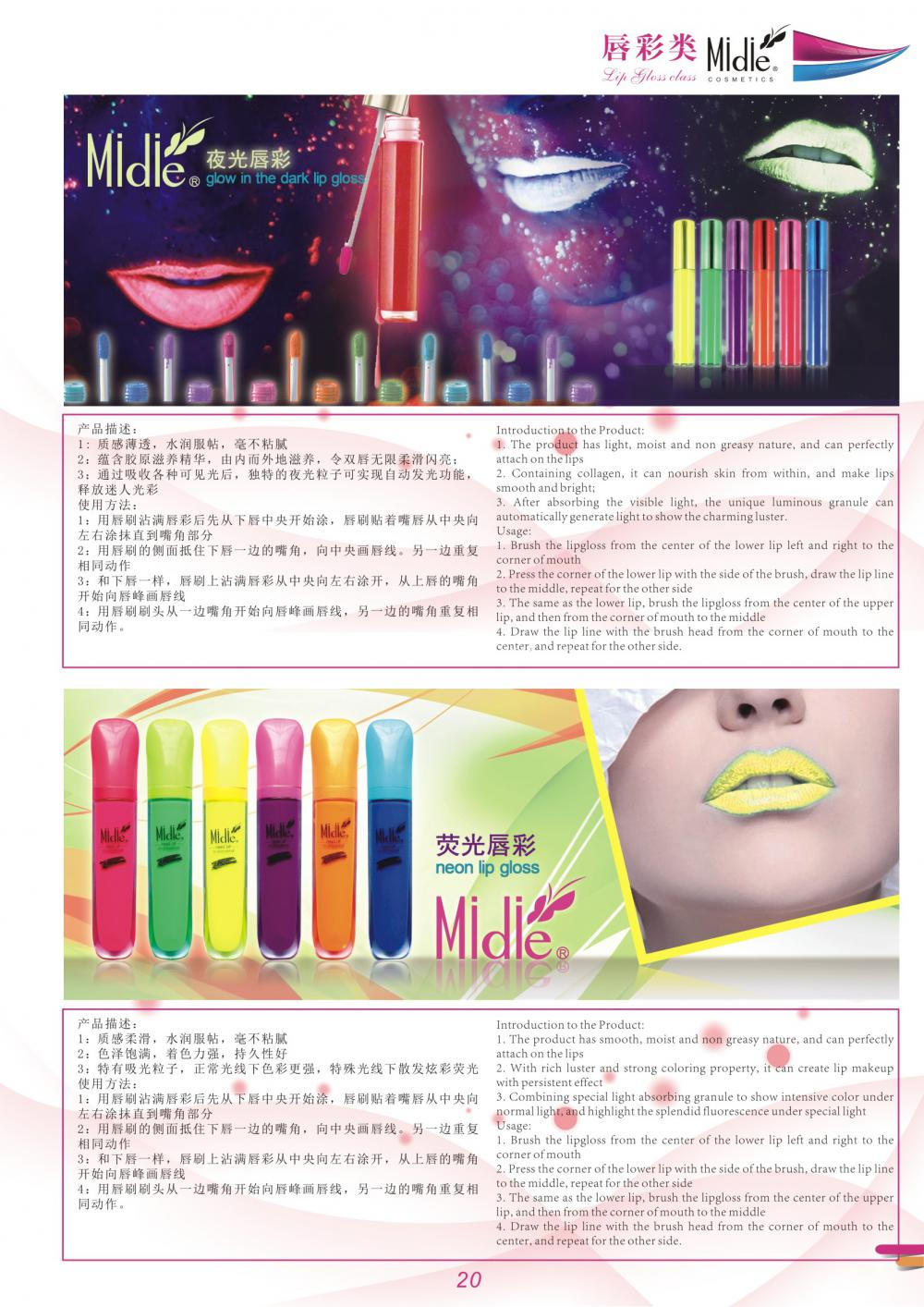The automated order system applied by Arla Foods can accurately communicate production notices to the milk filling line.
Arla Foods in England applied new technology to its new dairy plant. Its head of engineering, Mr. Soeren Vonsild, said, “We supply dairy products for 5 supermarkets, including skim milk, semi-skimmed milk and full fat. Milk, and each product has a different label, and for this reason, we produced 4 different sizes of packaging: 1, 2, 4 and 6 pints, respectively, since dairy products need to be sent to 55 different warehouses. In order to reduce the replacement time, we need a new and flexible management method."
Arla's new approach is to apply a technology that combines the perfect combination of processing and packaging. The four identical packaging lines installed in the processing plant were put into operation from August 2004. High-density polyethylene (HDPE) bottles are blow molded first, and the processed milk is then transferred from the barrel to the production line. This process involves few operators. The system is provided by the Syskron subsidiary of Krones, a newly developed automatic order monitoring and management system. The production manager of each shift no longer needs to schedule an operator to shut down or turn on the machine according to the production plan, because all this work is automatic, and the operator only needs to replace the label reel and refill the lid in the hopper.
Mr. Vonsild said: “Now, we can send production orders from the ERP down to the processing and packaging machinery, which then collect the data and send it back to the ERP. This allows our work to be completed within a single system. ". And each packaging line contains the same equipment, such as an electronic weighing filling machine; a rotary labeling machine; a Zalkin capping machine; an Enercon induction sealing machine and two Elopak push-type balers. Usually, a packer can be used to fill a box of 100 bottles (the number depends on the size of the bottle), and then transported by a cart to the loading truck, and can be sent directly to the customer's nearest warehouse.
Other equipment also includes milk processing equipment provided by Tetra Pak, and 8 logoplaste blow molding equipment, its stable speed, to ensure that the bottling line at any time through the conveyor belt automatically obtain milk bottles as needed.
Batch management method
Usually, production orders are notified to the factory in batches. For example, a supermarket needs a batch of skim milk in quantities of 10,000 bottles and 4 pints, while the other nine supermarkets also need milk in the same package, but the amount required varies. At this point, the 10 batches of orders will be notified to the processing plant from the ERP system, and the process is as follows: When the goods sent are transferred from one retailer to another, the labeling equipment will make different labels on the packaging and wait for the hair goods.
If there are a few operators who need to work in the bottling plant, their location should be on the second floor with a labeler and a capping station. Their job is to monitor through the HMI screen the ERP system to which the order is conveyed and prepare for the next process. Every batch of product that needs to change is mainly the fat content of the filled milk, the label material used, the code printed on the label, and the cap (skimmed milk, semi-skimmed milk, and full-fat milk should be of different colors). Based on what they saw on the HMI screen, the operator installed the reel label material on the labeling unit and confirmed that the installation was correct. In addition, they also need to fill the hopper with the appropriate cap and confirm through the HMI screen whether this step was successfully completed. Because if these items are not confirmed, the system will not proceed with the next step.
And if it is necessary to put a new label, the bottle with the label B first is ready to enter the filling machine. Once the barcode on the first bottle is scanned, the filling process on the filling machine will stop automatically. In this way, all bottles with label A will be removed from the production line one by one, and the final packaging process into the packaging machine is completed. When the packaging machine does not see the bottle labeled A, it sends a signal to the filling station on the filling machine to continue it into the bottle labeled B.
illustration
The figure shows all hardware equipment and control systems with integrated components required for the four packaging production lines. The pink part at the bottom represents the equipment: such as labeling machine, filling machine, capping machine, sealing 
Machines and packaging machines. All devices are connected by Ethernet and have a fixed IP address. No matter which distributor is provided by the PLC on the device, the devices can be networked and receive production orders through the network.
On the equipment level, there are four PLCs that are used to run Syskron's production line management system software. The top layer is again four process data servers, represented in yellow. All collected data must be recorded for future analysis of production trends.
Between the process data servers 1 and 2 is a Microsoft SQL database server, which stores the time-related data collected by these two servers. SQL database servers have greater storage than process data servers and are suitable for long-term data storage. The process data servers 3 and 4 are also a Microsoft SQL database server for storing batch-related data collected by the process data servers 3 and 4 .
Connected to each pair of process data servers is the "Gateway PC," which connects everything to the ERP. Arla's ERP program is provided by SAP and is an FTP (File Transfer Protocol) server in the Gateway PC module. It can transfer files back and forth between the ERP and the lower layer. Another module of the gateway PC is the XML ISA-95 interface. In the closed loop, it allows real-time information to be sent back and forth between the ERP and the factory.
In theory, ERP software is not suitable for accessing real-time data at the factory, and the ISA-95 standard can be converted from one network protocol to another network protocol, from an advanced service protocol to a production protocol suitable for factory floor.
Looking back at the picture, a blue layer on the four process servers shows the HMI screen. With the HMI software, Arla's staff can get real-time images to see the entire blow molding/processing/packaging system from the images. Everything that happened.
The figure shows the composition of the four production lines. Many independent mechanical components on a production line are tightly integrated with the ERP system. You can see the No. 4 production line, which is very suitable for mass production in line with S88 standards and concepts.
Mr. Klaus Doppler of Syskron said: “This is a batch processing method suitable for packaging production. For example, if you use the S88 standard method, the labeling machine is no longer a single device. You can put the label The equipment is regarded as a functional unit or a functional module, relying on the standardized S88 machine standard, you can connect multiple functional units together.Action begins or ends, this state will be linked with the next functional unit, so that it can make use of Features" .
When the operator sees from the HMI screen that the label A needs to be converted into label B, he can install a new label roll at the infeed point of the labeler and connect one side of the new roll to the leading edge of the roll. At the same time, confirm that the label B is ready on the HMI screen. When the production critical point of the previous batch of labels is reached, the labeling machine automatically reduces the speed to half of the normal working speed, and then cuts off the label A, so that the label B is automatically connected to the end of A. Although the label changes, the production speed will only decrease automatically, but it will never stop. When the label is changed in motion, the production line management system will keep track of which bottles have received the labels at the two label joints and automatically detect and reject the bottles.
Batch instructions are sent by the ERP and transmitted to the production line management system, which divides an instruction into multiple instructions and assigns it to each packaging device. The direct benefit is that every packaging machine can get all the information it needs in a timely manner, not only to perform the current batch of production, but also to perform the next batch of production. Therefore, when the next batch of products is put into operation, the operator can correctly handle the product labels associated with the product and the related cap colors.
It is worth pointing out that everything mentioned above happens in a fast filling factory environment. For example, a packaging line for packaging 4 pints of milk, for example, has a packaging speed of 345 bottles/minute. The real-time data collection capability of the Syskron line management system is very powerful. If the quality of the bottle is not qualified due to liquid infiltration, label shifting, and abnormal cap shape, the number of defective bottles will be transferred to the upstream labeler. It must label more qualified bottles to make up for those unqualified quantities.
Mr. Vonsild said: “In the past, we would have risks such as deviations in the number of labels, misplaced bottles or wrong coding of bottles, and confusion of the colors of caps, but now the production line management system has prevented such problems from occurring. We will follow the All equipment is adjusted according to the parameters. It is believed that the benefits we can obtain from the automated order system can be further expanded."
Source: Modern Packaging
Lip balms are most often used to moisturize and protect the Lips. They often contain SPF protection.
Lip Balm or lip salve is a wax-like substance applied topically to the lips of the mouth to moisturize and relieve chapped or dry lips
The primary purpose of lip balm is to provide an occlusive layer on the lip surface to seal moisture in lips and protect them from external exposure. Dry air, cold temperatures, and wind all have a drying effect on skin by drawing moisture away from the body. Lips are particularly vulnerable because the skin is so thin, and thus they are often the first to present signs of dryness. Occlusive materials like waxes and petrolum prevent moisture loss and maintain lip comfort while flavorants, colorants, sunscreens, and various medicaments can provide additional, specific benefits.
Lip balm can be applied where a finger is used to apply it to the lips, or in a Lipstick-style tube from which it can be applied directly.
Lip balm was first marketed in the 1880s , though its origins are commonly traced to earwax which was used as lip balm prior to that.

Lip Balm
Nourish Lip Balm, Moisturizing Lip Balm, Natural Lip Balm, Cake-shaped Lip Balm, Colored Lip Balm, Lip Balm for Kids
Zhejiang Zhongyimei Industry Co., Ltd , http://www.queeeny.com